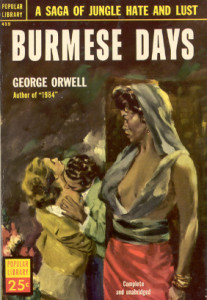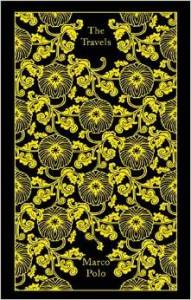Posted: February 14th, 2015 | No Comments »
Anthony Sattin’s The Young T.E. Lawrence has just been published reminding me that Lawrence of Arabia’s older brother was a missionary in China. Montagu Robert Lawrence (1885-1971) was a Medical Missionary in China, first with the China Inland Mission and later with the Church Missionary Society. Robert was definitely more influenced by their mother’s evangelical Christian beliefs that his brothers. Robert had served durin the First World War and then embarked on the missionary route. He was accepted into the CIM in 1921 and on arrival in China trained during 1922 in language studies in Chinkiang (Zhenjiang), Kiangsu (Jiangsu) before being stationed at the Paoning Memorial Hospital in Szechuan. His mother, Sarah, joined him there in 1923. In 1927, due to the dangers associated with increasing attacks on missionaries and other westerners in western China, Robert and his mother returned to England, part of the evacuation of more than half of the CIM staff in China at the time.
However, Robert returned to China in 1932 working as a locum for Dr J. H. Lechler at the Church Missionary Society hospital in Mienchu (a small missionary post in Szechuan), accompanied again by his mother (who was then 70 years old). In 1935, as the Lawrence’s were leaving China via a voyage down the Yangtze, they received news of the death of T. E. Lawrence in a motorcycle accident in England.

Posted: February 13th, 2015 | No Comments »
These days they seem to prefer Jin Jjiang to Jing Jiang but the hotel’s the same, of course originally Sir Victor Sassoon’s Tudor style Cathay Complex on Rue Cardinal Mercier (now Maoming Road). But, for a time there, after 1949 and before they regulated the spellings it was the Jing Jiang…..

Posted: February 12th, 2015 | No Comments »
A little mystery I’m sure someone out there knows the answer to….
I just read Calvin Tomkins short and perfectly formed biography of the Murphy family, their interconnections with everyone from the Fitzgeralds to Picasso, Dos Passos, Diaghilev, Archibald McLeish etc on the French Riviera – Living Well is the Best Revenge.
In 1923 (or possibly 1924) the Murphy’s went to Cap D’Antibes, invited by Cole Porter. They liked it and stayed in the Hotel Du Cap run by Antoine Sella and his family. The hotel usually closed in the hot summer months (the Cap was not yet the fashionable resort it would later become) but Gerald Murphy persuaded the owner to stay open with a skeleton staff to accommodate him. It is mentioned that a Chinese family was staying there and were delighted as they also ended up staying for the summer. This family is never named, though other sources say the father was a Chinese diplomat in Europe.
Who were this Chinese family; who was the diplomat??? Anyone know???


Posted: February 11th, 2015 | No Comments »
 RAS Weekender
SATURDAY 14th February 2015
4pm for 4.15pm
Radisson Xingguo Hotel, Li Ballroom
Dr. EDWARD DENISON
Empire of the Son – Japan’s Ultra-Modernism in Manchuria
In 1908 the British poet-scholar, Laurence Binyon, observed the Japanese ‘look to China as we look to Italy and Greece, for them it is the classic land.’ For China, Japan was a subaltern neighbour and cultural progeny. This ancient hierarchy was turned on its head in the early twentieth century, when Japan, a young upstart in international affairs, set its sights on empire. Over the course of half a century from 1895, Japan’s appetite for expansion created fertile grounds for modern architecture and progressive urban planning in China. These activities reached their apogee before the Second World War in Manchuria, northeast China. Recast in 1932 as Manchukuo, Japan’s puppet state became the site of feverish construction; the scale, speed and cause of which were often unprecedented and celebrated by the Japanese as ultra-modernism. This lecture will chart the rise (and ultimate fall) of Japan’s ultra-modernist fantasy from the perspective of architecture and urban planning, exploring the key plans and buildings that defined this extraordinary, yet too often overlooked, era.
ABOUT THE SPEAKER
Dr Edward Denison is an architectural historian, writer and photographer. He is a Research Associate and teaching fellow at the Bartlett School of Architecture, University College London. His latest book produced with the Royal Asiatic Society is titled ‘Ultra-Modernism in Manchuria’ (HKUP, 2015). Others include: ‘Luke Him Sau, Architect: China’s Missing Modern’ (Wiley 2014), ‘Modernism in China – Architectural Visions and Revolutions’ (Wiley, 2008), ‘Building Shanghai – The Story of China’s Gateway’ (Wiley, 2006), ‘The Life of the British Home – An Architectural History’ (Wiley, 2012) ‘McMorran & Whitby’ (RIBA, 2009) and ‘Asmara: Africa’s Secret Modernist City’ (Merrell, 2003).
ENTRANCE: Â 70 RMB (members), 100 RMB (non-members)
Includes a glass of wine or soft drink
MEMBERSHIP applications and membership renewals will be available at this event.
WEBSITE: Â www.royalasiaticsociety.org.cn
Posted: February 10th, 2015 | No Comments »
Paula Rabinowitz’s American Pulp: How Paperbacks Brought Modernism to Main Street is a fascinating read for all those who like their pulp fiction. One interesting aspect she covers in the book is the “pulping” of various classics to make them appear sexier, more titillating and interesting to pulp readers who might not normally buy them. One example is the 1952 Popular Library’s edition of George Orwell’s 1934 Burmese Days, the tales of his time as a colonial policeman upcountry in Burma….not sure what exactly anyone buying the book on the strength of the cover art would have made of it though!!…..

Posted: February 9th, 2015 | No Comments »
Watched Hitchcock’s Rear Window (1954) the other night, an old favourite. But had forgotten that James Stewart’s international photographer character LB “Jeff” Jefferies makes a reference to his Shanghai cigarette box, which is slightly damaged and his girlfriend Lisa (Grace Kelly) would like to replace…..
Lisa turns to look at him, and moves toward him, carrying the
cigarette box.
LISA
(Smiling)
That's because I bought out the house.
This cigarette box has seen better
days.
INT. JEFF'S APARTMENT - SUNSET - MEDIUM SHOT
Lisa facing Jeff in the chair.
JEFF
Picked it up in Shanghai -- which
has also seen better days.
LISA
It's cracked -- and you never use
it. And it's too ornate. I'm sending
up a plain, flat silver one -- with
just your initials engraved.
JEFF
Now that's no way to spend your hard-
earned money!
LISA
I wanted to, Jeff.
(A sudden intake of
breath)
Oh!
She turns around quickly and dashes to the door, dropping
the cigarette box on the table as she passes, THE CAMERA
PANNING with her. She goes up the two steps, stops, turns
back to Jeff.

Posted: February 8th, 2015 | No Comments »
I’ve blogged before about Chung Ling Soo (here) actually William Ellsworth Robinson, an American magician who worked mostly in Britain before the First World War impersonating a Chinese magician in full mandarin regalia until a catching a bullet trick went wrong and he ended up dead at the Wood Green Empire. However, he was not the first act to imitate a Chinese, circus and music hall acts pretending to be Chinese have a much longer heritage….
Here is a recollection of the acrobat Ki-hi-chin-fan-foo from The Public Life of W.F. Wallett (a once famous clown and published first in 1870), recalling the act who was, in reality, an Irishman. He was a major attraction and star of Pablo Fanque’s circus (Fanque, born William Darby – pictured below – being the first black man, and possibly the only one, to run a circus in Britain).
The season was a succession of triumphs. One of the principal attractions was a little Irishman whom I engaged in Dublin, who rejoiced in the name of Vilderini, one of the best posture masters the theatrical world ever produced. I engaged him for three months at a liberal salary, on the express understanding that I should shave his head, and convert him into a Chinaman. For which nationality his small eyes, pug nose, high cheek bones, and heavy mouth admirably adapted him. So his head was shaved, all but a small tuft on the top, to which a saddler with waxed twine firmly attached his celestial pig-tail. His eyebrows were shaved off, and his face, neck, and head dyed after the most admired Chinese complexion. Thus metamorphosed, he was announced on the walls as KI HI CHIN FAN FOO (Man-Spider-leg mortal). We had about twenty supernumeraries and the whole equestrian company in Chinese costume. Variegated lanterns, gongs, drums, and cymbals ushered the distinguished Chinaman into the ring, to give his wonderful entertainment. The effect was astonishing, and its success extraordinary. In fact the entire get-up was so well carried out that it occasioned us some annoyance. For there were two rival tea merchants in Glasgow at the time, and each of them had engaged a genuine Chinaman as touter at his door. Every night, as soon as they could escape from their groceries, they came to the circus to solicit an interview with their compatriot. After being denied many nights in succession, they peremptorily demanded to see him. Being again refused, they determined to move for the writ of habeas corpus. That is to say, they applied to the magistrate stating they believed their countryman to be deprived of his liberty except during the time of his performance. We were then compelled to produce our celestial actor, who proved to the satisfaction of the worthy magistrate that he was a free Irishman from Tipperary.

Posted: February 7th, 2015 | No Comments »
Yea, you can get it for free on line, but this really is a lovely edition of Marco’s Travels from Penguin Classics…. Classi…..
Classi…..








